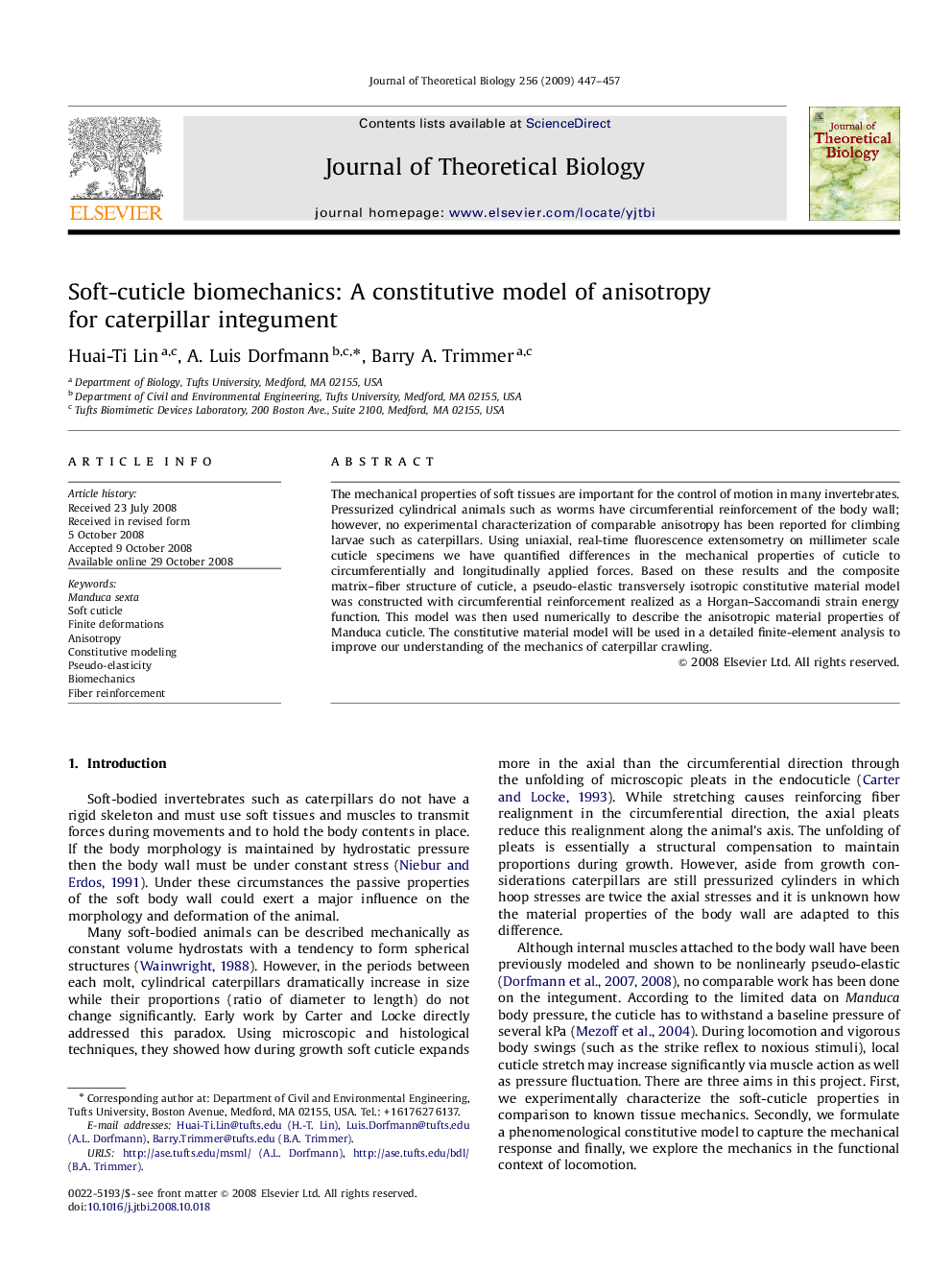| Article ID | Journal | Published Year | Pages | File Type |
|---|---|---|---|---|
| 4498167 | Journal of Theoretical Biology | 2009 | 11 Pages |
The mechanical properties of soft tissues are important for the control of motion in many invertebrates. Pressurized cylindrical animals such as worms have circumferential reinforcement of the body wall; however, no experimental characterization of comparable anisotropy has been reported for climbing larvae such as caterpillars. Using uniaxial, real-time fluorescence extensometry on millimeter scale cuticle specimens we have quantified differences in the mechanical properties of cuticle to circumferentially and longitudinally applied forces. Based on these results and the composite matrix–fiber structure of cuticle, a pseudo-elastic transversely isotropic constitutive material model was constructed with circumferential reinforcement realized as a Horgan–Saccomandi strain energy function. This model was then used numerically to describe the anisotropic material properties of Manduca cuticle. The constitutive material model will be used in a detailed finite-element analysis to improve our understanding of the mechanics of caterpillar crawling.
